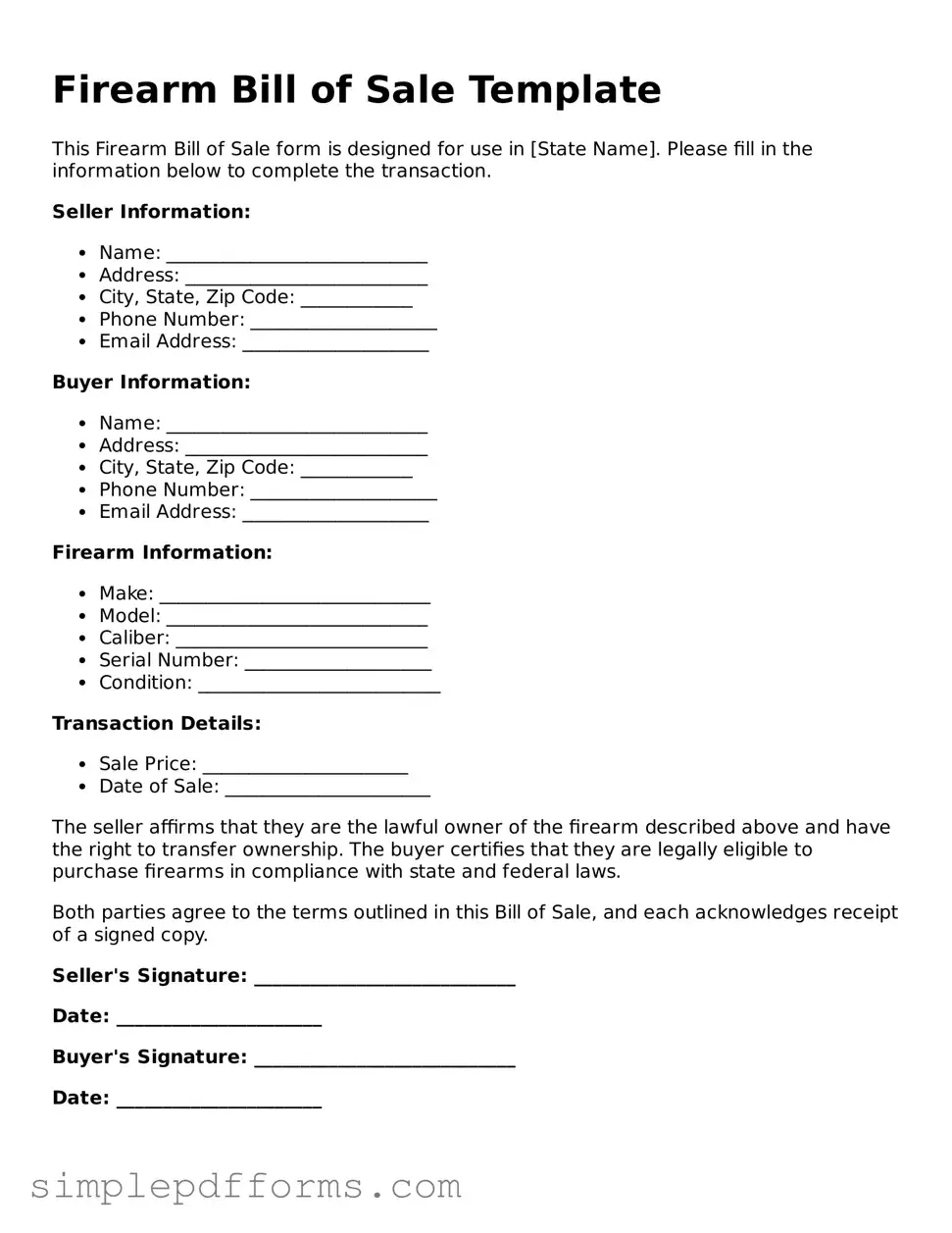Firearm Bill of Sale Template
This Firearm Bill of Sale form is designed for use in [State Name]. Please fill in the information below to complete the transaction.
Seller Information:
- Name: ____________________________
- Address: __________________________
- City, State, Zip Code: ____________
- Phone Number: ____________________
- Email Address: ____________________
Buyer Information:
- Name: ____________________________
- Address: __________________________
- City, State, Zip Code: ____________
- Phone Number: ____________________
- Email Address: ____________________
Firearm Information:
- Make: _____________________________
- Model: ____________________________
- Caliber: ___________________________
- Serial Number: ____________________
- Condition: __________________________
Transaction Details:
- Sale Price: ______________________
- Date of Sale: ______________________
The seller affirms that they are the lawful owner of the firearm described above and have the right to transfer ownership. The buyer certifies that they are legally eligible to purchase firearms in compliance with state and federal laws.
Both parties agree to the terms outlined in this Bill of Sale, and each acknowledges receipt of a signed copy.
Seller's Signature: ____________________________
Date: ______________________
Buyer's Signature: ____________________________
Date: ______________________
